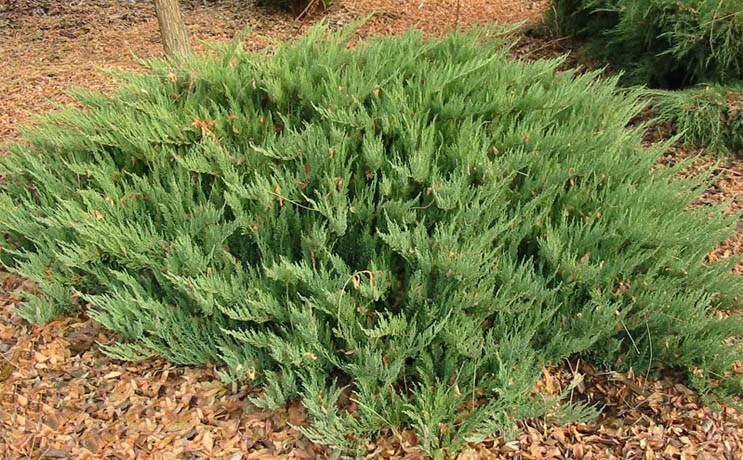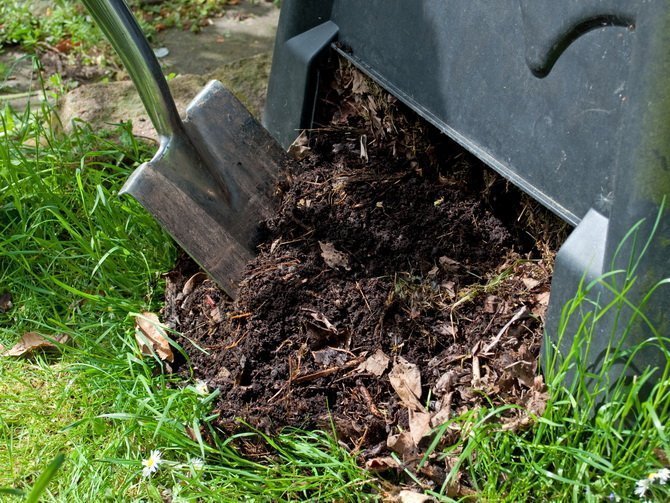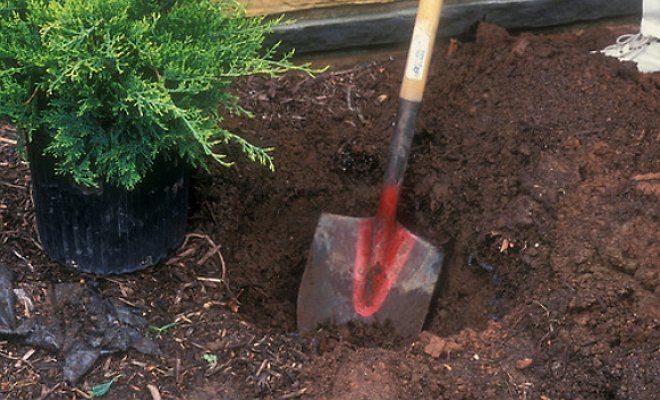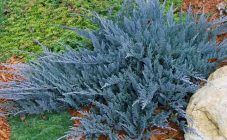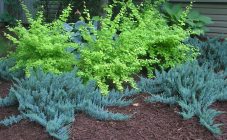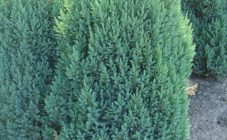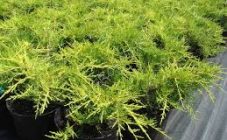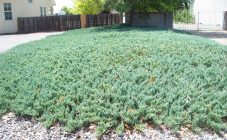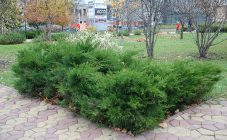Content:
Juniper Cossack Tamariscifolia is a perennial coniferous plant. Easily tolerates any weather conditions. One of the most demanded types in landscape design. But in order to get the appropriate decorative effect, you need to familiarize yourself with the peculiarities of its cultivation.
Juniper Tamariscifolia: description of the main characteristics
Juniper Tamariscifolia is more often used as an ornamental plant in landscape design. This is because the bush requires almost no special care. It takes root well in summer cottages, in the garden, in city squares and even on the balcony in a pot. Growing a bush at home on a windowsill protects the entire apartment from the growth of pathogenic microorganisms, thanks to its fungicidal properties. He also:
- unpretentious to the composition of the soil;
- frost-resistant plant, withstands sub-zero temperatures up to -25 degrees;
- withstands strong winds;
- does not require frequent watering, is resistant to drought;
- withstands direct sunlight.
Description of the variety
Juniper Tamariscifolia (from the Latin Juniperus sabina variegata - juniper) is a low perennial evergreen plant with a spread-out crown and needle-like needles. It grows extremely slowly, mostly increases in width. In one year, it rises in height by 2-3 centimeters, and the width is 12-13 centimeters. Only after 10 years, the Cossack juniper increases to 25-30 centimeters. And the crown width reaches up to two meters.
In adulthood, the Tamariscifolia juniper has a dense crown. The twigs are covered with vertical shoots and dense needle-like needles. The twigs, in turn, are divided into several small needles, which makes the plant fluffy. The color of Cossack juniper can be different, from light green to bluish tint. Towards the end of spring, the juniper bush is overgrown with berries. These are poisonous fruits with a rounded shape and a dark blue tint.
How to plant a plant
Juniper Tamariscifolia is grown in Central Asia, Europe and eastern Siberia. Almost any soil is suitable for it. It grows both in saline soil, in the shade, and in sandstones. Ideally, if the site is neutral or slightly acidic soil. For planting Cossack juniper, you need to choose a site with average availability of light, in partial shade, or in an open sunny place.
In order to plant a Cossack juniper, you need to dig a small hole. Leave at least 50 centimeters between the bushes to create an artificial border from the bushes. For a single plant, the free space around should be at least two meters.
Juniper Cossack Tamaristsifolia is planted as follows:
- dig a hole at least 60 cm deep and 60 cm wide;
- pour expanded clay or crushed brick about 10 cm at the bottom;
- put a mixture of peat, sand and turf on top.
Care rules and feeding
The Cossack juniper has gained wide popularity due to its unpretentiousness. The plant requires almost no maintenance and is resistant to weather changes. However, in order for the bush to grow and delight its owners for many years, it needs care. To do this, you must observe the following recommendations:
- Water abundantly in the first few weeks after planting.
- clean the weeds around every day.
- loosen the soil at the landing site;
- use top dressing in the spring.
- cover the soil with peat for the winter.
As it grows, the juniper will become much easier to care for. Tamariscifolia easily tolerates rainy weather, but in a swampy area or in an area with constant stagnation of water, it can die.
Tamariscifolia grows extremely slowly, so there is no need for constant cutting of branches. However, it is necessary to shorten the length so that the bush does not fill the entire space and does not look untidy. It is enough to do this once a year. Such manipulations do not harm the plant, provided that it is properly trimmed. To do this, you need to pinch off the tips of the bush, thus creating a shape and directing the germinating needles in the right direction. The bush can be given any shape. It is advisable to treat the cutting points with resin.
Diseases and pests. Means to fight
Like all plants, juniper is susceptible to various diseases and pests. In early spring, when the intensity of sunlight increases, the twigs of the plant suffer from sunburn. As a result, the color on the affected areas changes to yellowish and in places the needles on the juniper crumble. This is due to a lack of moisture. Frozen roots during this period are unable to supply the plant with sufficient liquid. In order to avoid such problems, you need to:
- cover the bush in early March from direct sunlight;
- insulate the soil;
- water the plant with warm water.
The yellowing of the crown can also be associated with the fungus. A similar defeat of juniper is called "rust". It is mainly affected by the Cossack and Virginian juniper species. The disease destroys the bush within several years. Rust infects pear trees, so close proximity also leads to infection of juniper. At the site of the lesion of the fungus, thickenings appear, which later, after several years, turn into orange outgrowths filled with basidiospores. The only way to get rid of pests is to prune the branches affected by the fungus. Areas in places of a cut must be treated with alcohol.
Tracheomycotic wilting of juniper occurs as a result of stagnant water. The disease affects the root system. The color of the roots changes to brownish, then they are colonized by gray spores. The disease spreads further to the trunk and branches. The plant stops receiving nutrients and dies. You can protect your juniper by:
- pruning of affected branches;
- soil treatment with fungicides;
- disinfection of the root system with drugs Maxim, Quadris, Fitosporin.
Very often in the spring, you can observe the drying and shedding of the branches of the Tamariscifolia Cossack juniper. The disease spreads gradually, affecting first small branches, and then, gradually covering the entire bush. The appearance of dark spots can be observed on the crown; these areas are inhabited by the fungus Phomopsis juniperovora. The development of the disease is facilitated by poor soil, planting plants close to each other, lack of access to fresh air. The timely removal of lesions and treatment of the crown with disinfectants can save the juniper.
Landscape: use in garden decoration
Juniper plants are popular in landscaping.Mass is especially popular due to its rich green color and dense crown. Juniper Cossack is able to grow in breadth, forming a kind of needle-like cushion. Such plants are planted to decorate the garden, flower beds, lawns as decorative components. And also with the help of Cossack juniper, you can zone the plots.
Tamariscifolia can be found as decoration in the form of a green border, in front of public buildings, along stairs. It goes well with other plants, conifers and shrubs.
The main advantage of Tamariscifolia Cossack is its beautiful needles, a variety of shapes and colors, a characteristic aroma, and resistance to adverse environmental factors. In order for the plant to please for a long time with its appearance, the plant needs careful care.
